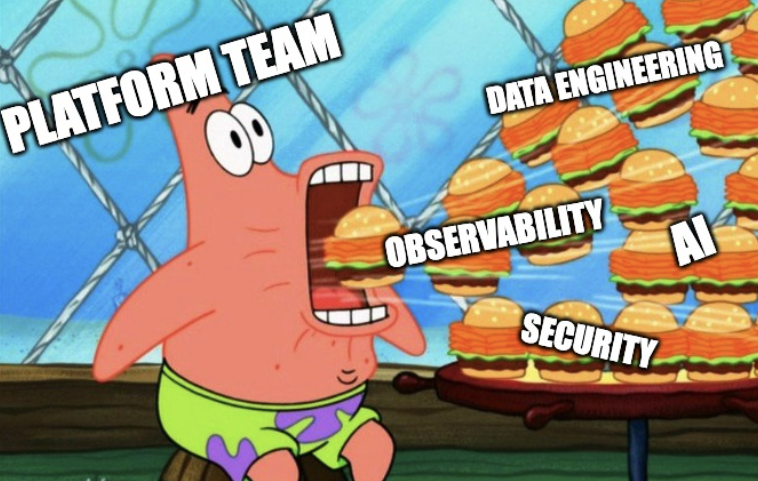
Hello!
Good data is key to a successful platform. Today’s issue will cover what you should look for in your setup.
Let’s get bakin’ 🥐
Platform analytics is how you win
There are a lot of steps in the software delivery process between developers and customers and just as many opportunities for things to go wrong. That’s why you want to streamline the process, making it faster and more reliable.
In order to do that, your platform needs to provide some necessary data. 📊 A good engineering analytics platform gives you the tools you need to identify how different pipelines are performing and where inefficiencies exist.
The most important measurements of success for delivery systems are:
1️⃣ Velocity. The faster you move, the faster you can respond to market demands or client feedback. Keep in mind that this will mean different things to different team members and that each perspective is valid. For example, velocity for a software engineer is how long it takes to work through their PR from the moment they open it until it’s reviewed and merged in. For DevOps, velocity could be about how long an average build takes. For the whole process, velocity is the release cycle: how long something takes from inception to getting out the door.

2️⃣ Risks. Risk is unavoidable. For example, if you move too fast, security or quality can suffer. Thankfully, risk leaves early warning signals. Analyzing each phase of the cycle will help you identify what these signs are in your setup. If items spend a lot of time in development, for example, this indicates that the features are too large.
3️⃣ Throughput. If you move too slowly in your quest for quality, your final throughput numbers will suffer.
You need to find a good balance between the three that matches the needs of your organization and teams.
If you’re into DevOps, you’ll want to use DORA metrics: deployment frequency, lead time for change, time to restore, change failure rate. DORA will help you determine the three measurements we discussed earlier.

When you put this all together, you can define tangible success criteria and deliver insights to the right stakeholders. Over time, the metrics will pinpoint where teams are improving and areas for growth. This can make your delivery pipeline more predictable and efficient.
It’s important to note that data isn’t a silver bullet. You still need to foster transparency, pay attention to trends, develop a positive team culture, and get internal buy-in. That being said, the more data you have, the easier it is to achieve great things.
Want to dive deeper? Watch Logilica Founder Ralf Huuck’s PlatformCon talk on delivering predictably with platform analytics.
Short on time? ⏳ We got you 🥐😋

🥐 Looking for the best DevOps tools in 2022? Search no further. This overview by Romaric Philogène has you covered.
🥐 Interesting read about how Airbnb automates incident management in a rapidly evolving ensemble of microservices.
🥐 So you're a podcast person. Don't worry, I gotchu. On the lastest episode of The Engineering Enablement Podcast, Picnic Technologies’ Jelmer Borst talks about the value of having a Product Manager in a platform team:

🥐 Now taking nominations for the worst URL ever created...

That's it for the #5. Learned something new? Then share it and spread the platform 🎉
This is a community-driven newsletter, so if you have anything 🔥 to share from the cloud-native world, send it our way. You can submit your ideas here.
Stay crunchy 🥐
Luca



























.webp)
.webp)




.webp)
.webp)


.webp)
.webp)

.webp)


-1.webp)














.jpg)
.jpg)
.jpg)
.jpg)
.png)
.jpg)
.png)
.jpg)
.jpg)
.jpg)


.jpg)
.jpg)
.jpg)
.jpg)
.jpg)
.png)
.jpg)
.jpg)
.jpg)
.jpg)
.jpg)
.jpg)
.png)
.jpg)
.jpg)
.jpg)
.jpg)
.jpg)
.jpg)












